With Lagarde taking off her ultra-hawk armor at the latest ECB gathering and last week’s business surveys pointing to deepening wounds for the Euro area economy, investors have become skeptical as to whether the ECB should press the hike button again in September. Will the Eurozone preliminary inflation numbers, due out on Thursday at 09:00 GMT, clear the fog? And could traders become willing to buy the euro again?
To hike or not to hike?
At the July ECB gathering, policymakers decided to raise interest rates by 25bps to a historic high as it was widely anticipated, but they abstained from committing to further moves. At the press conference following the decision, President Lagarde appeared way less hawkish than she did at previous gatherings, acknowledging that the economic outlook has deteriorated and replying with a “decisive maybe” when asked whether they are planning to hike again in September.
Since then, the CPI data for July revealed that headline inflation dropped to 5.3% year-on-year from 5.5%, but the core metric that excludes energy, food, alcohol and tobacco, held steady at 5.5% yoy. Combined with a rise in services inflation to a new record of 5.6% yoy, this is far from suggesting that the ECB’s job is done.
Nevertheless, the ECB’s soft rhetoric and a streak of data pointing to continued economic weakness in the region have made investors skeptical as to whether officials should raise rates again at the September 14 gathering, and the decision now boils down to a coin toss according to money markets. Preliminary business surveys for August have rung the recession bells, with the service-sector PMI falling into contractionary territory for the first time since December, joining the manufacturing index and dragging the composite down to 47.0 from 48.6. Will the ECB take the sidelines in order to protect the overall economy, or will they stay committed to bringing inflation to heel at any cost?
Further inflation cooling to bolster the pause case
With the ECB trapped between a rock and a hard place, Thursday’s flash CPI numbers could attract special attention as they could tilt the scale either towards a September hike or a pause. The headline CPI rate is expected to have declined further to 5.1% from 5.3%, and the ultra-core that excludes energy, food, alcohol and tobacco, is forecast to have slipped to 5.3% yoy from 5.5%.
Further slowdown in inflation amid a bleeding economy could convince market participants that Lagarde and her colleagues could wait for a while before deciding whether and when further hikes are appropriate. In other words, a pause in September could turn out to be the base case scenario in the eyes of investors.
Euro/dollar may continue drifting south
Something like that could result in further selling in the euro, especially against its US counterpart which has been enjoying inflows, not only because traders are re-examining the case of interest rates in the US staying higher for longer than previously thought, but also as a safe haven. Concerns surrounding the performance of the Chinese economy have intensified as the latest stimulus measures by Chinese authorities and the People’s Bank of China (PBOC) failed to revive market sentiment.
Euro/dollar fell below the support (now turned into resistance) zone of 1.0830 on Thursday and broke below the 200-day exponential moving average (EMA) on Friday. Combined with the fact that the pair is trading well below the prior uptrend line drawn from the low of September 26, these technical signs increase the likelihood for further declines, at least until the critical area of 1.0665, the break of which may be the confirmation signal for a full-scale bearish reversal.
But let’s not ignore some upside risks
Having said all that though, besides painting an ugly economic picture, the PMIs revealed that inflationary pressures have picked up in August, both in terms of average selling prices and input costs, although both measures are still pointing to far weaker inflation rates than the ones seen during the two years prior to this summer.
This means that there may be some upside risks surrounding Thursday’s CPI figures. Ergo, in the case that inflation reaccelerates somewhat instead of slowing further, the euro may rebound on renewed speculation about a September ECB hike. Nonetheless, a lot more is needed for euro/dollar to re-enter an uptrend orbit. Eurozone data may have to start showing signs of stabilization and from a technical perspective, the pair may need to rebound and return above the key resistance of 1.1070.




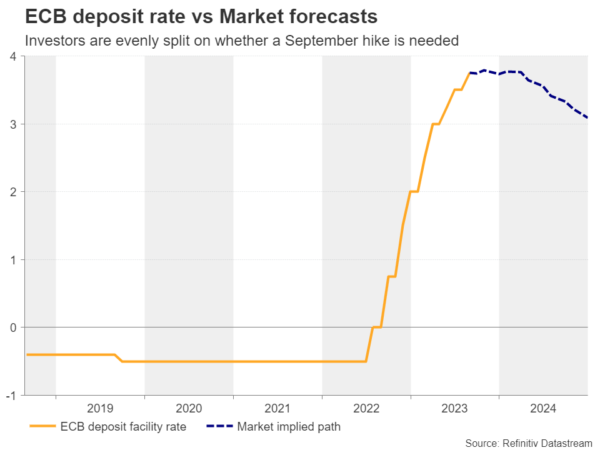
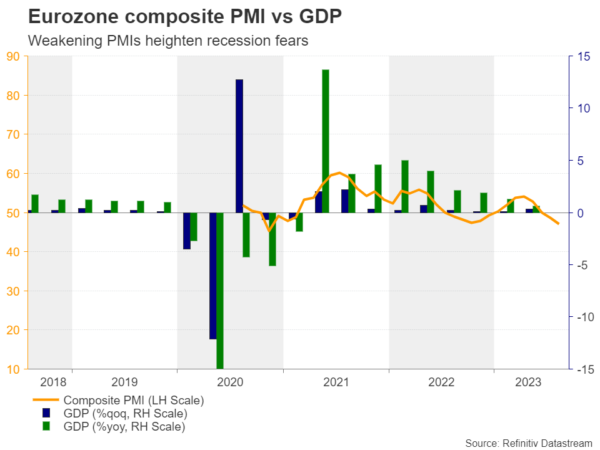
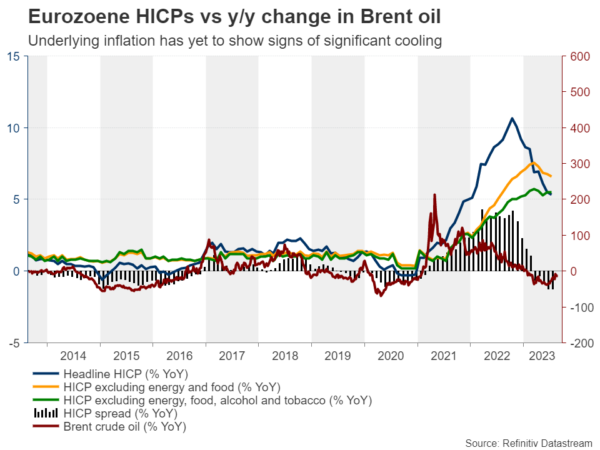
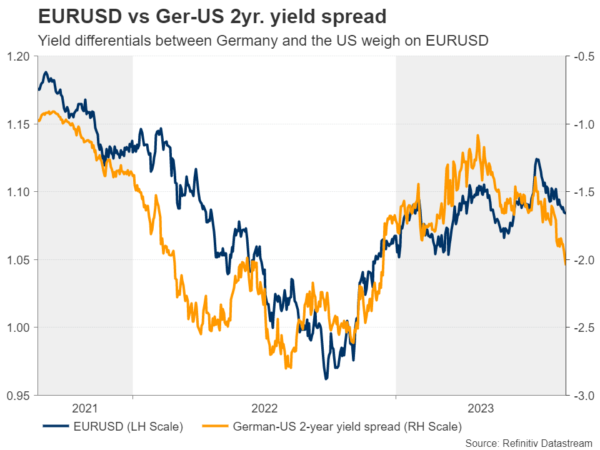
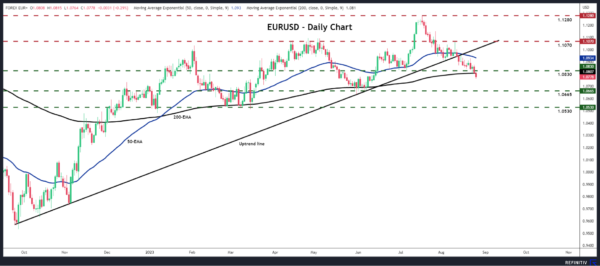





![Week ahead – ECB set to cut, BoC might pause as Trump U-turns on tariffs [Video]](https://www.actionforex.com/wp-content/uploads/2018/04/f-ecb29-218x150.jpg)



